How Deep To Plant Seeds? Get It Right Every Time With This Simple Trick
Take the guesswork out of seed planting with this foolproof trick to get the right sowing depth – for strong, healthy starts every time.
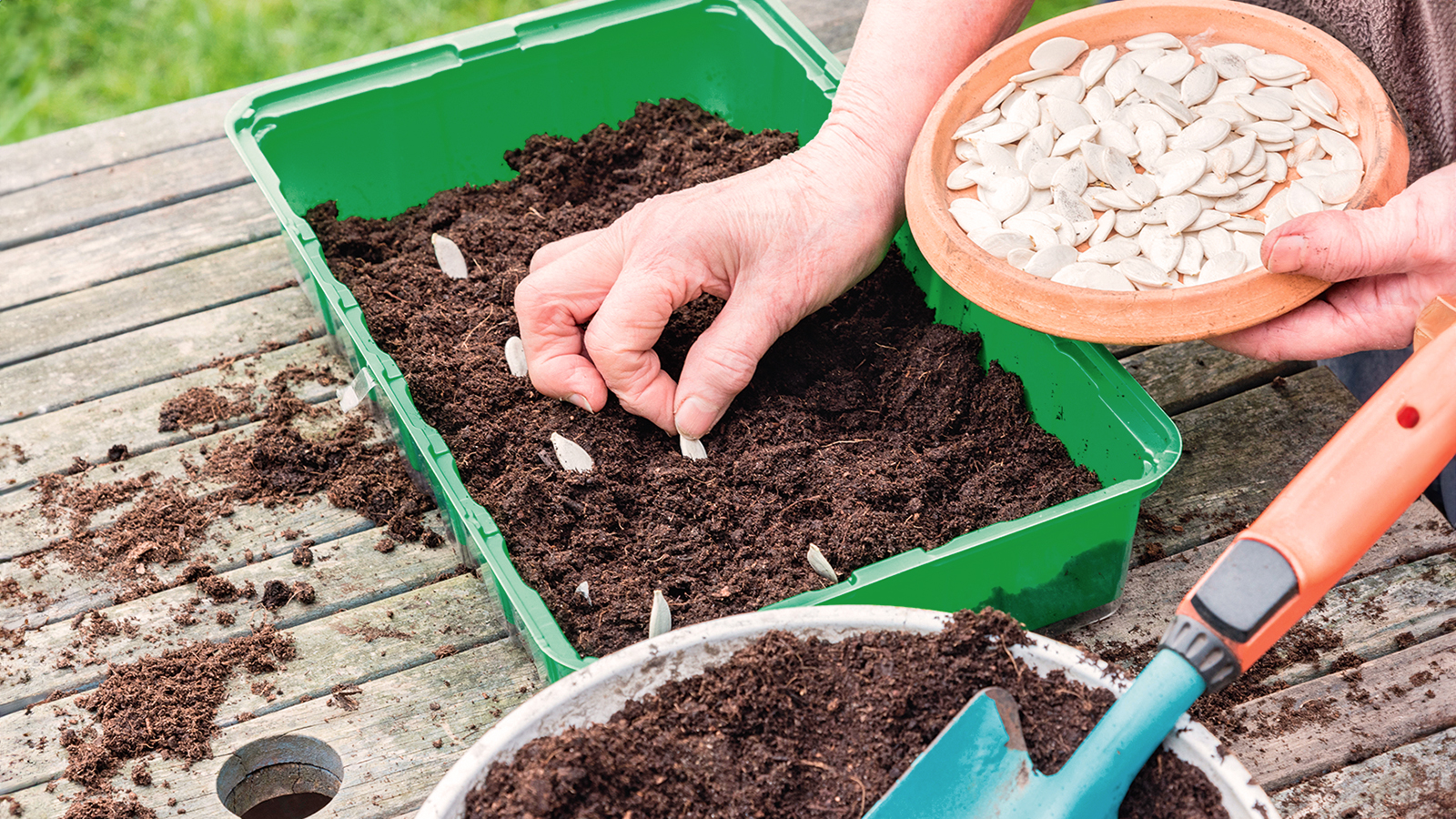
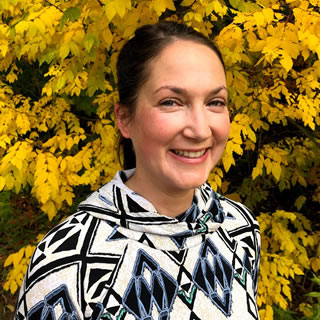
Starting plants from seeds is an affordable way to enjoy growing more, and is a basic skill for gardeners to learn. Seeds are less expensive than transplants, and it’s increasingly easy to find exactly the varieties you want online. Some public libraries even have “seed libraries” where you can get them for free.
Planting seeds is relatively easy, but you do need to consider some important factors, like sowing depth. This is the depth below the surface of the soil or potting mix at which you place a seed for ideal germination and growth. Knowing how deep to plant seeds can make all the difference between thriving seedlings and failed seeds.
If you sow too deeply, then seed germination may not occur. Or, if it does, the seedling's tender growth might not reach the surface of the soil. Sowing too shallowly can also be a problem. The roots will be too close to the surface and may be weak and unable to provide enough support for the seedlings. If you direct sow seeds outside, wind or animals may disperse shallowly planted seeds before they sprout.
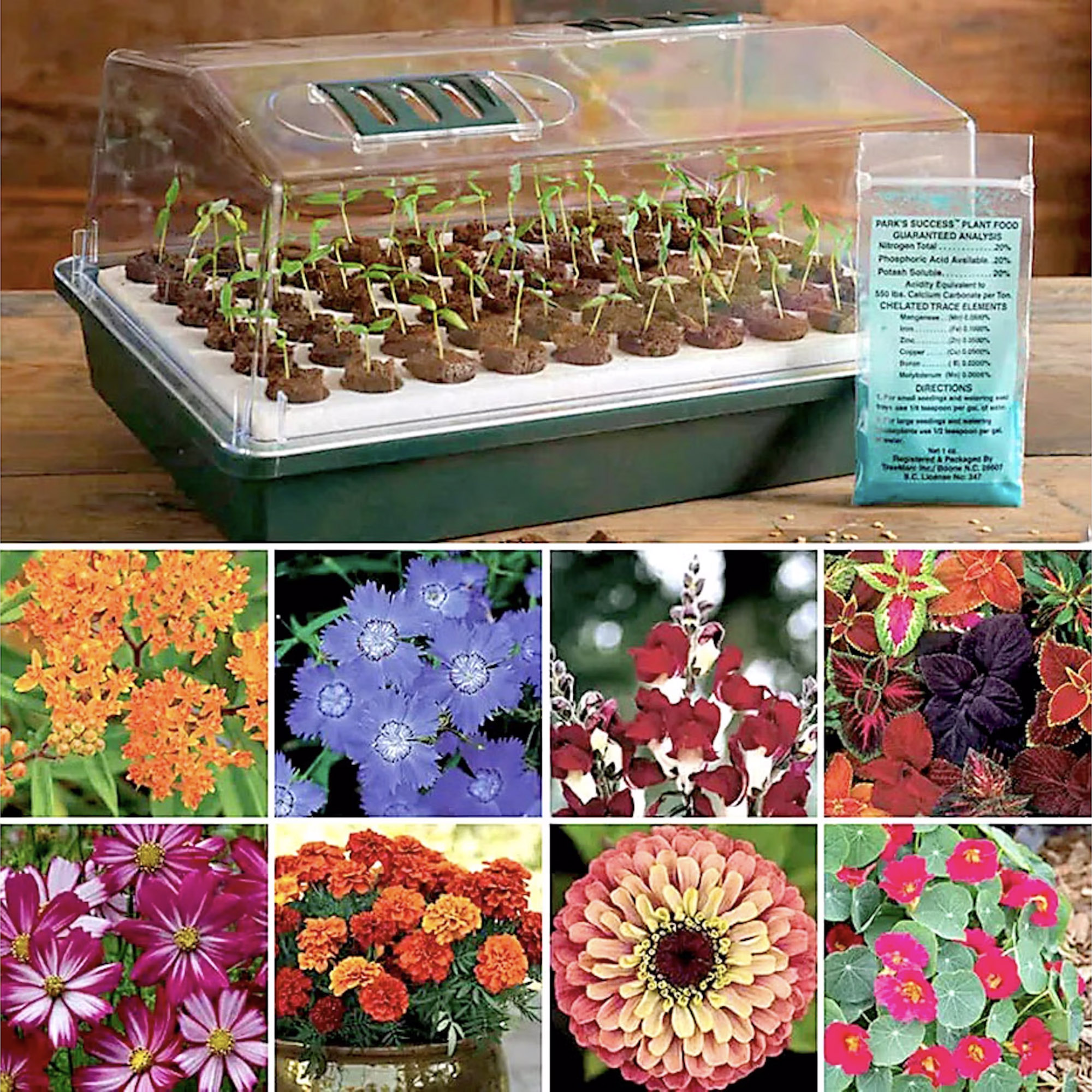
From organic seeds and seedling trays to growing kits such as the Ultimate Flower Seed Collection, you'll find everything you need for successful starts in our Shop.
How Deep to Plant Seeds?
Different seed and plant types should be sown to different depths. The seed packet information should list the correct depth for the plant and variety you’re growing. However, if you don’t have the sowing depth information to hand, use this general rule to determine how deep to sow seeds: the larger the seed, the greater the depth. Sow your seeds to a depth of two to three times the size of the seed.
For example, if the seed is an eighth of an inch around or long, sow it to a depth of a quarter or three-sixteenths of an inch.
For the tiniest seeds, measuring isn’t necessary. Lettuce seeds, for example, are very small and need some sunlight to germinate. The best way to sow them is to press the seeds very lightly into the surface, followed by a light sprinkling of soil over the top.
When measuring depth for sowing seeds, first prepare and level the soil so it’s even across the surface. You can then use a ruler or other measuring device to make holes to just the right depth for each seed.
Gardening tips, videos, info and more delivered right to your inbox!
Sign up for the Gardening Know How newsletter today and receive a free copy of our e-book "How to Grow Delicious Tomatoes".
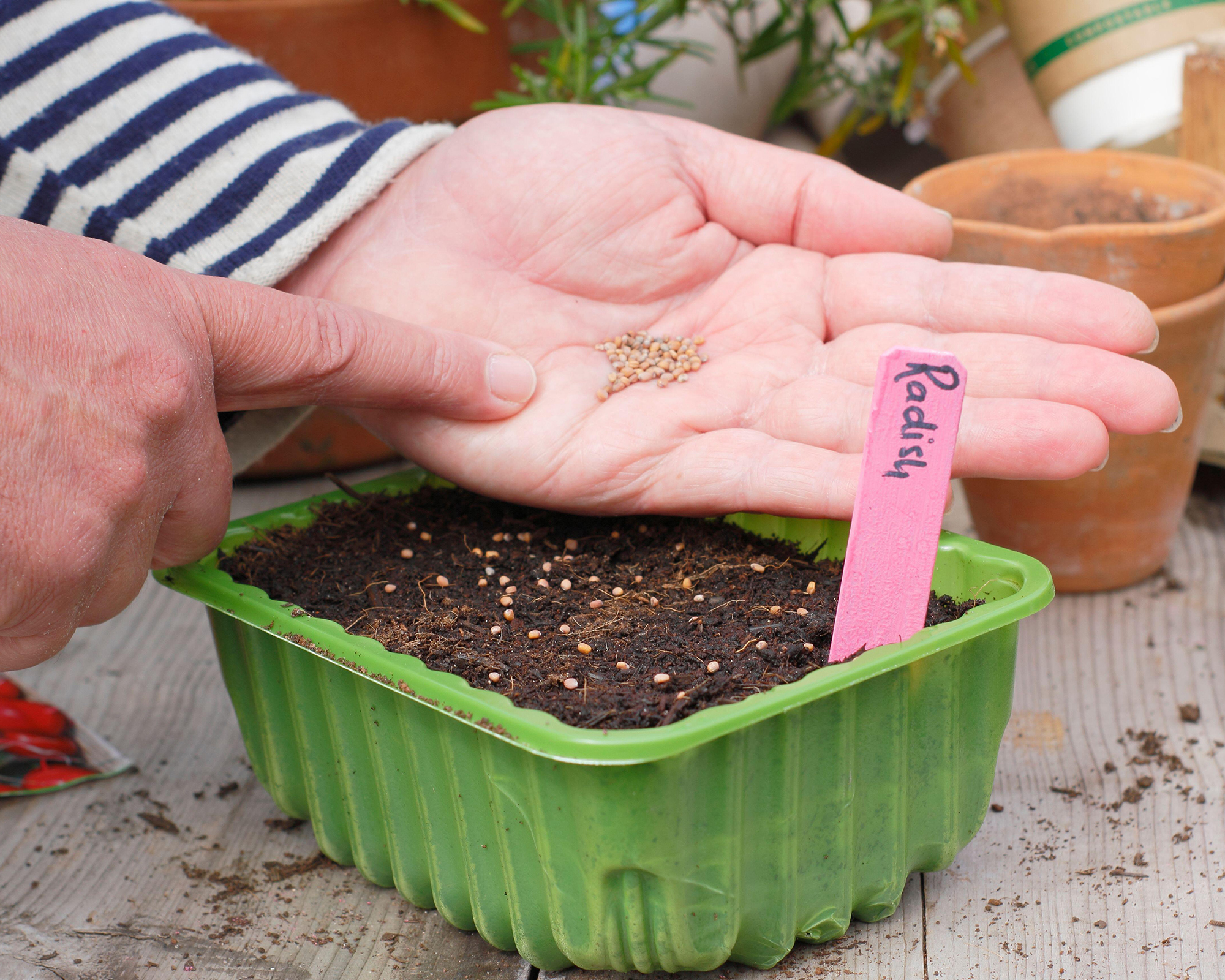
Check Conditions Before Sowing
If you are starting seeds outside, conditions will vary and should influence your sowing depth. You should still follow the above guidelines but consider the prevailing conditions and make slight adjustments.
For example, consider sowing a little deeper in dryer soil, when planting later in the season, and when soil is heavy or coarse. Sow more shallowly earlier in spring and when soil is moist, fine, or has a lot of organic material.
Starting seeds indoors with seed trays or starter pots allows you to better control conditions. It also means you can begin planting earlier in the season and transplant seedlings as soon as the last frost date has passed.
The Gardening Know How sells a range of professional-quality seedling trays and growing kits, with a choice of drip irrigation or Bio Dome lids. You can even mix and match insert sizes to suit the plants you want to grow.
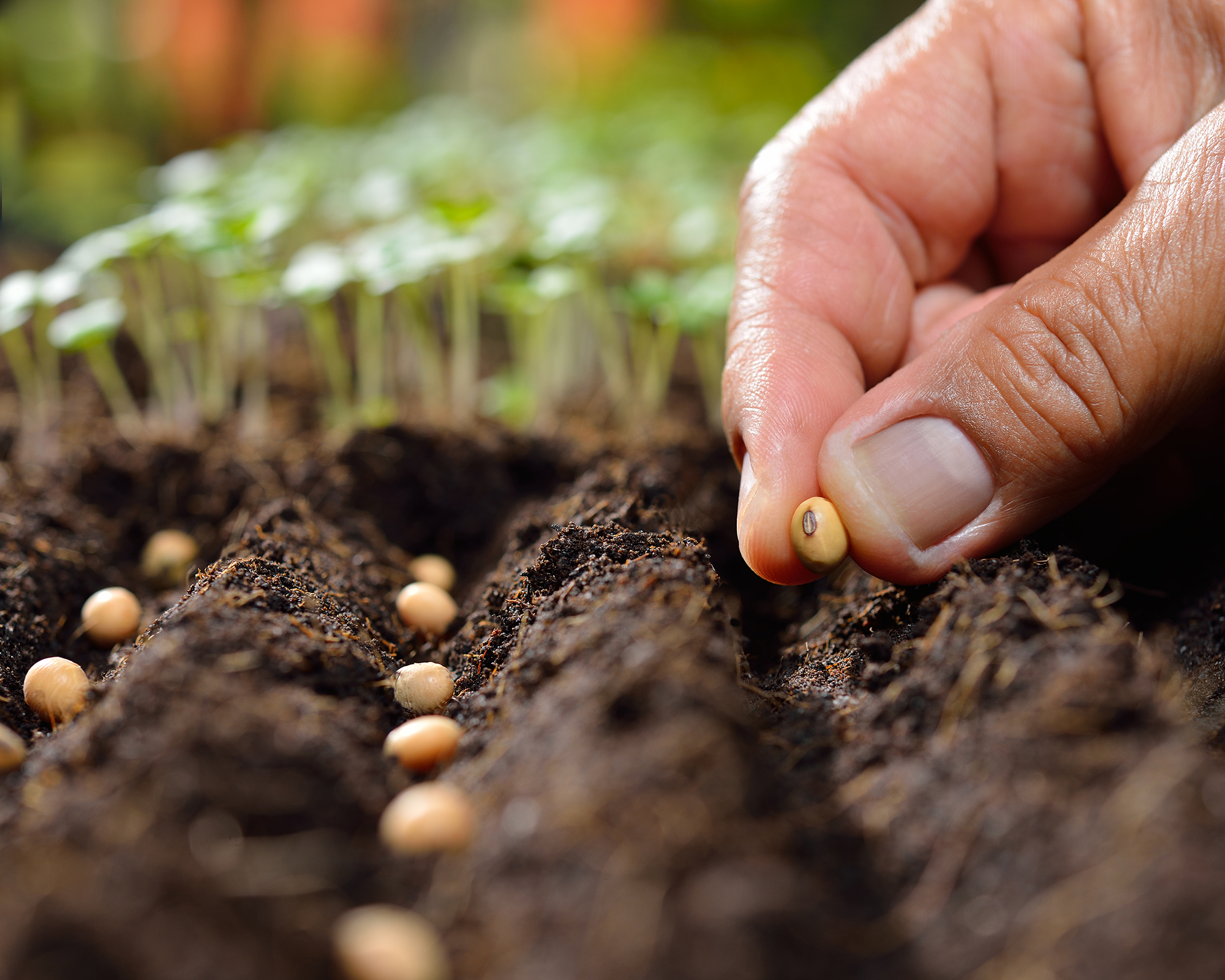
Seed Starting Tips
Getting the depth right is essential for starting plants from seeds. If you can master that, you just need a few more pro tips for success:
- Use a pencil or wooden dowel to make uniform holes in the soil for sowing seeds.
- Gently tamp down the soil over the sown seeds. You don’t want the soil to be too loose or too firmly packed.
- If starting seeds indoors, use shallow, wide seed trays. Do not use garden soil. Instead, look for a light potting mix or make your own soilless mix.
- If starting seeds outside, cover the planting area with a floating row cover or mini DIY greenhouse. This will protect seeds from rain, frost, and animals scavenging seeds to eat.
- Resist the urge to poke around in the soil to see if the seeds have sprouted yet. Double the germination time for the type of plant to get an idea of when you should first see a sprout emerge from the soil. Disturbing the seeds could disrupt their germination and growth.
- Keep the soil or potting mix moist but not soggy.
- Learn how to thin seedlings as they grow to give them enough space to establish. To do this, pull out the smallest and weakest plants. Ultimately, you want to achieve the ideal spacing recommended on the seed packet. If you don't have this information, then check the Gardening Know How growing guides for different flowers and vegetables.
Starting plants from seeds is a fun late winter or spring project and a good way to save money in the garden. Annual flowers and vegetables are the easiest plants to start this way. Once you master the details of seed starting, like depth, you’ll be able to grow many of your garden plants this way.
More Seed Starting Inspiration
- Learn when to start seeds indoors for bigger harvests and more beautiful blooms.
- Get the planting depth right every time using the Vego 10-in-10 Hori Hori Knife, which has a ruler on the blade and a whole host of other useful features.
- Try germinating seeds in paper towel – the easy, no-mess method for faster growth.
- Ready to start growing in the colder months? Try winter sowing seeds in your garden.
- Browse our curated collection of seeds in the Gardening Know How Shop. Choose from vibrant flowers, fragrant herbs, and the most delectable vegetables.
This article features products available from third party vendors on the Gardening Know How Shop.

Mary Ellen Ellis has been gardening for over 20 years. With degrees in Chemistry and Biology, Mary Ellen's specialties are flowers, native plants, and herbs.
-
 Looking For Plants To Give You The Soft And Fuzzies? Try These 5 Fuzzy Leaf Plant Options
Looking For Plants To Give You The Soft And Fuzzies? Try These 5 Fuzzy Leaf Plant OptionsLovers of texture, drama, silver foliage and tactile plants will adore these special sensory garden additions. These fuzzy leaf plant options will leave you all aglow
By Susan Albert
-
 Get Ready For A Summer Of Hummers! Grow These Full Sun Hummingbird Plants and Flowers
Get Ready For A Summer Of Hummers! Grow These Full Sun Hummingbird Plants and FlowersIf you’re lucky enough to enjoy a sunny backyard, make sure you are maxing out on your pollinator opportunities and grow these full sun hummingbird plants and flowers
By Tonya Barnett